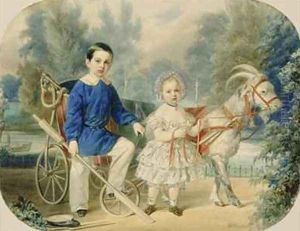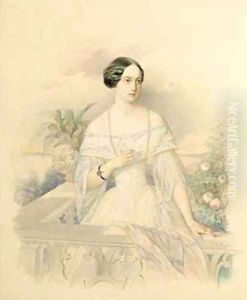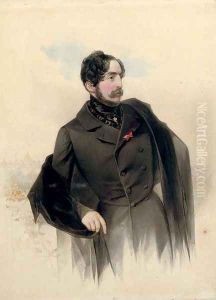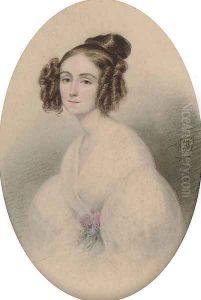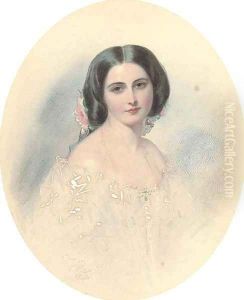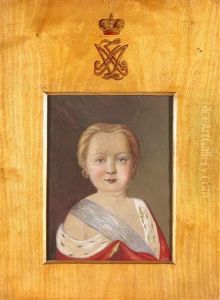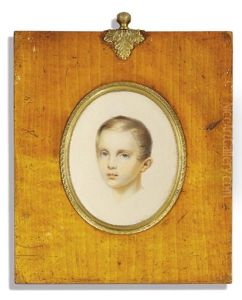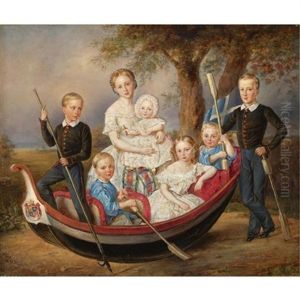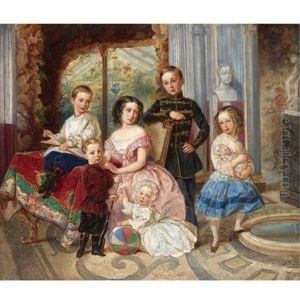Vladimir Ivanovich Hau Paintings
Vladimir Ivanovich Hau was a Russian painter and academician known for his historical and portrait paintings, as well as his work in watercolors. Born on August 1, 1804, in St. Petersburg, Russia, Hau was part of a Baltic German family. His artistic journey began early under the tutelage of his stepfather, Alexander Varnek, who was also a notable artist of his time.
Hau enrolled in the Imperial Academy of Arts in St. Petersburg in 1818. He studied there for several years and received a gold medal for his achievements in 1827, which was a significant honor that affirmed his talents and potential as an artist. This award granted him the opportunity to further his studies abroad, which was a common practice for promising young artists of that era.
Throughout the 1830s, Hau traveled across Europe, honing his skills and absorbing various artistic influences. He spent significant time in Italy, a pivotal center for art, where he was influenced by the rich traditions of the Italian masters. Hau's work from this period shows a strong commitment to the academic standards of the time and a keen interest in historical accuracy and detail.
Upon his return to Russia, Hau became a respected member of the Imperial Academy of Arts and was eventually appointed a professor there. His historical paintings and portraits were well-received, and he became a sought-after artist among the Russian nobility. Many of his works depict scenes from Russian history, reflecting the 19th-century interest in national identity and the romanticized past.
In addition to his historical canvases, Hau was also recognized for his masterful watercolors. He contributed significantly to the development of watercolor techniques in Russia and had a substantial influence on the next generation of Russian watercolorists. His ability to capture light and his delicate treatment of color nuances are particularly noteworthy.
Vladimir Ivanovich Hau continued to paint and teach until his death on March 15, 1876, in St. Petersburg. His legacy is preserved in the Russian Museum and other institutions, which house his works and continue to celebrate his contributions to Russian art. Hau's career spanned a period of great change in Russia, and his work remains a testament to the rich cultural milieu of the 19th century.
